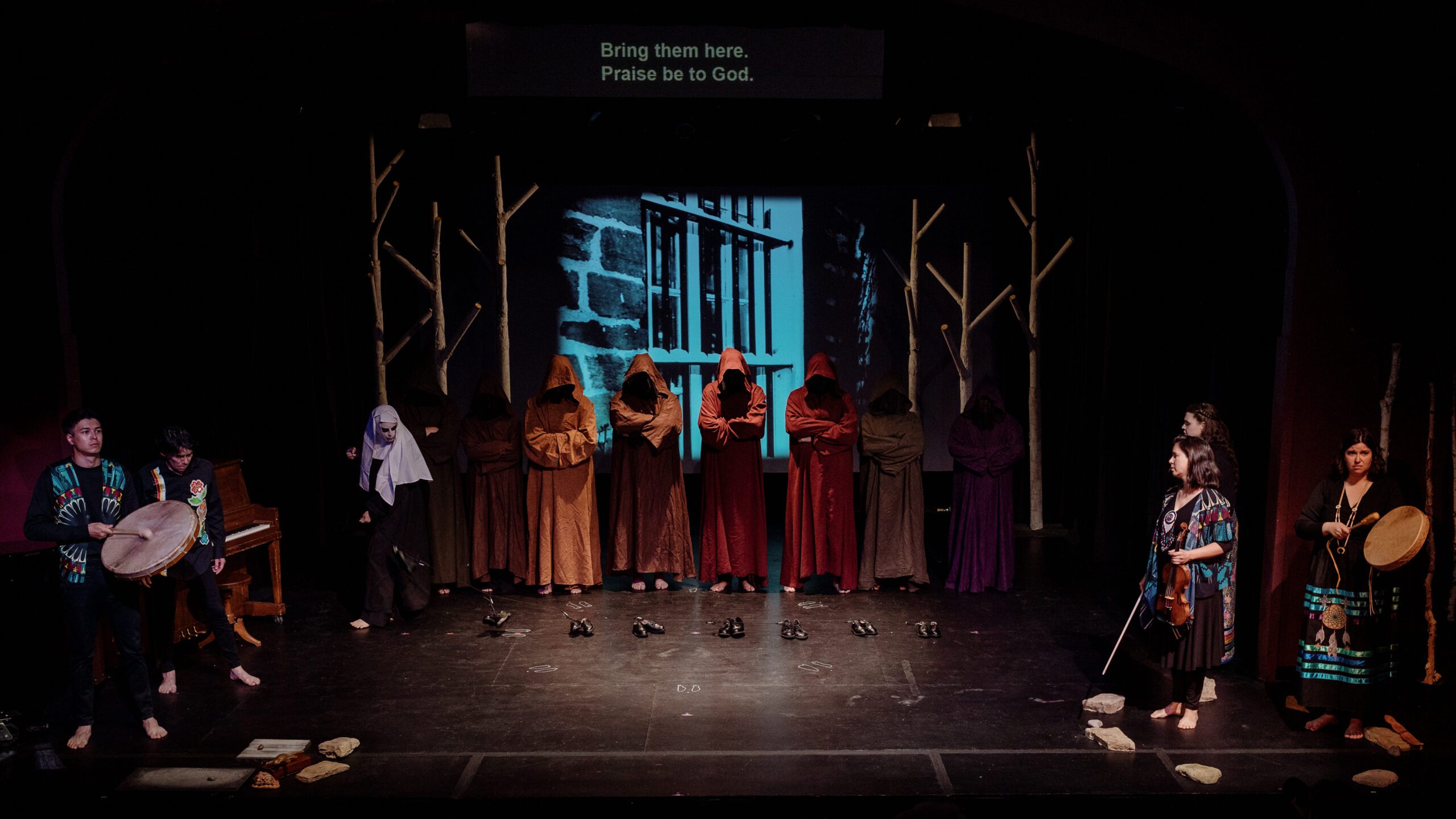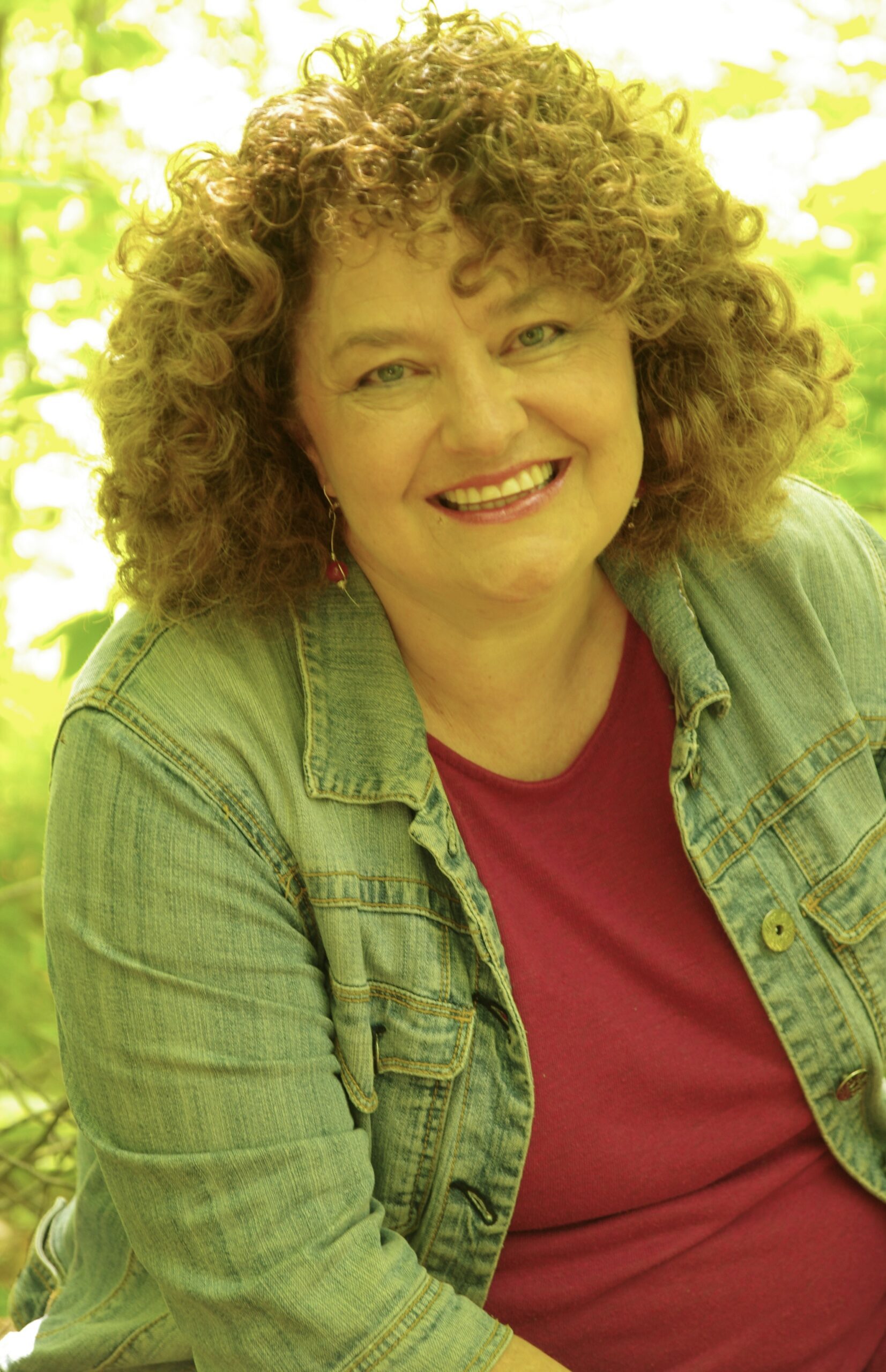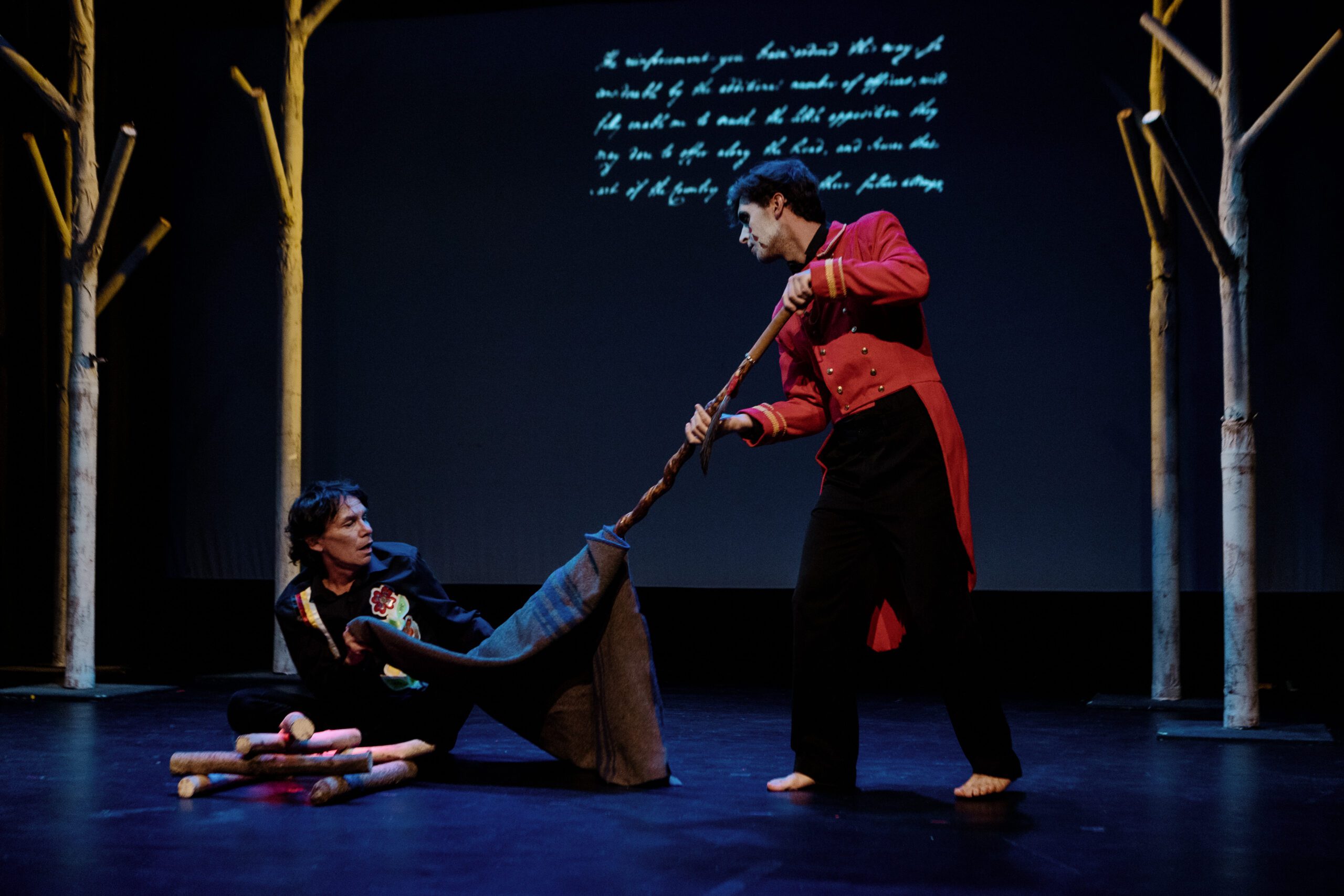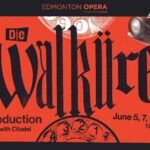How does one explore monumental concepts like time immemorial, ongoing cultural genocide and infinite healing in a 90-minute opera? An impossible task? Not when creative collaboration and storytelling are the driving forces of the production.
On August 15th and 17th, Highlands Opera Studio (HOS) presented Mishaabooz’s Realm at the Northern Lights Performing Arts Pavilion in Haliburton, Ontario. The opera was originally presented by HOS in 2017 in collaboration with l’Atelier lyrique de l’Opéra de Montréal. It was written in Haliburton County by Cree First Nation composer, Andrew Balfour.
Combining opera with First Nation singers and instrumentalists, Balfour and stage director and production designer, Valerie Kuinka, take their audience on a journey which leaves viewers reeling from emotional punches, but also feeling hopeful about the future. Inspired by traditional teachings from Turtle Island, the production was informed by the teachings of both Mohawk Elder Kevin Deer and Ojibwe song keeper Cory Campbell.
The plot of Mishaabooz’s Realm follows the story of Mishaabooz, the great Trickster spirit, who shifts shapes into many creatures, including a giant rabbit. The Trickster is sent to earth by Gitchie Manitou to teach the Ojibwe peoples; the lessons are taught through bad and good experiences. Appearing in any shape or form, the Trickster is often identified by black circles under the eyes. Mishaabooz’s story is told in three acts: Creation/Overture, The Creation of the Dominion of Canada, and Hope for the Future.
The opera begins with a greeting from traditional Mohawk drummer and singer Kevin Deer, followed by a video by media artist Bryan Besant and Winnipeg’s Camerata Nova (Dead of Winter). The video was an intriguing mixture of choral work (ranging from traditional vocal harmonics to throat singing), electronic music, photography, and animation, reminding the audience of the inextricable links between nature and humankind.
Enter actors, singers and musicians accompanied by Michael Murphy’s brilliant soundscapes, created with a menagerie of percussion instruments and “found” pieces such as stones on slate. Murphy literally made mute stones speak, emphasizing the role of rocks in the Indigenous creation story.
The beautiful and haunting vocal work by Keely McPeek (First Nishnaabe, Medicine Woman) and Sahara Adamitz (First Nishnaabe, Bear Clan), combined with traditional Mohawk songs and drumming performed by Kevin Deer (Spirits of the Ancients), created an organic and multi-dimensional sound evoking the theme of creation. Pianist Christine Bae (Creator’s Helper) and violinist Tara-Louise Montour (Thunderbird/Sky Spirit) were superb throughout the opera and should be commended for their involvement in acting onstage while also providing beautiful instrumental work. Child actors Tehya Lukasik and Kateri Lukasik, who alternately played the role of Sun Spirit/Little Bear, added a touch of naiveté and beauty whenever they were onstage. All was dream-like and balanced in this first act.

Photo Credit: April Kovacs
The company of Mishaabooz’s Realm in the Residential School sequence
The second act included some of the most disturbing and memorable images in the opera. Balfour is not only a brilliant composer but also an accomplished actor, as he portrayed
Indigenous Man caught in an increasingly volatile cultural war. The scene where Jeffrey Amherst (played with malevolent silence by bass-baritone Evan Lindberg) stole Indigenous Man’s staff and covered him with a smallpox blanket demonstrated the shift of balance of power between the Colonialists and the Indigenous peoples. Lindberg also used his impressive acting skills and sonorous voice in a scene in which he played an intoxicated politician singing “The Maple Leaf Forever,” and in another scene in which he was Sir John A. MacDonald delivering a speech about annihilating native peoples. Acting alongside Lindberg was Rebecca Gray, wearing a white face and dark eyes representative of the Trickster, who is always a powerful dramatic presence.
But the most moving scenes were the ones recounting the establishment of Residential Schools. McPeek and Adamitz poignantly portrayed women saying goodbye to their small
children. This scene was followed by the entrance of HOS ensemble, dressed in monk-like garb, accompanied by Gray portraying the truly frightening Head Residential School Nun. Balfour chalked tiny footprints onstage and the ensemble placed small black shoes on top of the outlines. One by one, the shoes were clipped onto a tether then towed offstage by the nun, after which the chalk footprints were mopped up…never to be seen again. It was a gut-wrenching scene.
There was more powerful imagery in an unforgettable homage to missing Indigenous women. Red dresses were hung on the six trees standing on stage. The bold colours were highlighted by the lighting, background visuals and music. The creativity and vision in Kuinka’s design was evident in these visually stunning statements. Audience members were left to think, “Is all lost?” At this point in the opera, each actor, singer, and musician, recited part of the Truth and Reconciliation Commission of Canada’s Calls to Action in English and in their own individual native languages (Cree, Mohawk and different regional dialects).
In the final act, Hope for the Future, mourning turned to dancing, and the entire ensemble appeared one by one as they created the symbol of an Ojibway medicine wheel by placing stones on stage. The music was upbeat and the singing and dancing was joyous.
The costumes – selected by Tara-Louiee Montour, Michael Murphy and Christine Bae and coordinated by Melissa Stephens – were a beautiful homage to Indigenous culture. Black material made a stunning contrast to the colours seen in embroidery, bead work, ribbon accents, and animal skins. Kudos, also, to David Sweeney’s elegantly simple lighting design, to Alex Gauvin for constructing the starkly beautiful trees, to makeup consultant Beth Kipping for her work, and to the digital team for adding to the power of this work.
The impact of the opera became apparent during panel discussions with the collaborators and players held at the end of every performance. Audience members wept as they recalled scenes from the opera, others shared their own traumatic stories of oppression, another asked in shocked disbelief if the events portrayed actually happened, while others asked questions about how such an impactful piece was created. Regardless of age, gender or ethnicity, each member of the audience walked away deeply impacted by what they had just witnessed. Mishaabooz’s Realm should become compulsory viewing for all opera goers and Canadians alike. It cannot and must not end in Haliburton.
Related Content ↘
Opera Canada depends on the generous contributions of its supporters to bring readers outstanding, in-depth coverage of opera in Canada and beyond. Please consider subscribing or donating today.

Dawn Martens received a 2010 Ruby Award for opera education, as well as a 2020 Governor General’s History Award for Excellence in Teaching for an online children’s production of Brundibar. A writer for Opera Canada for over 20 years, she is currently the host of Opera Night in Canada on 100.9 Canoe FM.










